There’s no one-size-fits-all solution, and over or underfeeding your feline master could lead to long-term health problems. So we put together this guide to help confused cat parents get it right. It contains everything you need to know about dietary factors, portion sizes, types of food, and caloric needs so your cat doesn’t end up a meme on a fat cat web forum.
We all love a cat that’s so fat and fluffy that she doubles over as a couch pillow when not eating or staring at birds out the window (her only other activities). But truth be told, a cat with a belly that drags along the floor isn’t really in the best of health.
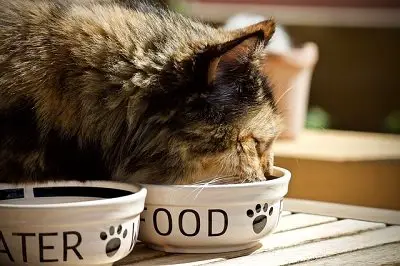
If you’re stressing about how much to feed your cat, don’t. Even people who have served their cat masters for years struggle to get it right.
To make it easy, let’s start with the factors to consider when calculating your daily offering to the queen of the house.
Contents
Factors To Consider When Calculating How Much Your Cat Needs To Eat
The reason you see so many cats either looking like strays fresh off the street or looking like the newly discovered 10th planet is because pet parents don’t consider some of the most important dietary factors. Every cat is unique and his or her needs will vary.
First, you should consider:
- Age: Growing kittens require more calories.
- Activity Level: Does she leap tall buildings in a single bound or is she basically fused to the fabric of your couch?
- Body Type: Bigger cats obviously require more calories.
- Food Type: Wet and dry cat foods have different nutritional composition. Make sure to get the nutrition facts of your brand of cat food or consult your vet. Be aware that if your cat eats only dry food, you will have to make sure she gets enough water to compensate.
Aside from these factors, you should also consider whether she is pregnant or nursing. If so, caloric needs will change drastically. For now, let’s omit that.
How Many Calories Does Your Cat Need?
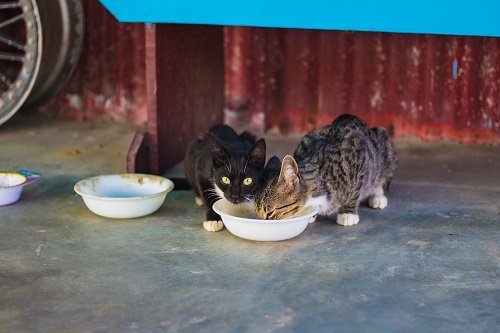
The following calculations are based on accepted veterinary standards. According to the Animal Medical Center of New York, an average cat requires about 60 calories per kilogram per day.
So, if you’ve got a normal 4 kilogram cat, you’re looking at 240 calories per day. If she’s more like a midsize sedan, she will require more (or less if she’s got to lose some).
Also, on average, dry food contains roughly 300 calories per cup (so 4/5ths cup is good for the day). Canned food contains 250 calories per 6 oz. can, so 1 is good for the day.
Recommendation: Dense, high-quality dry cat food is best for your cat’s health. Since it is more nutritious, you can feed your kitty smaller portions.
Your goal should be to take these basic calculations and then adjust them according to the factors in the section above. Is your 4 kilogram cat more active than most? Up her intake to a full cup. Do you have an old cat that just lays in literally the least convenient places around the house all day? She probably doesn’t need a full portion.
Don’t forget treats: If you’re anything like us, you can’t resist obnoxiously calling here kitty kitty and watching as your cat ungratefully takes her prize and runs off. If you’re loading fluffy up on treats, she doesn’t need as much at meal time.
Assessing Your Cat’s Dietary Needs
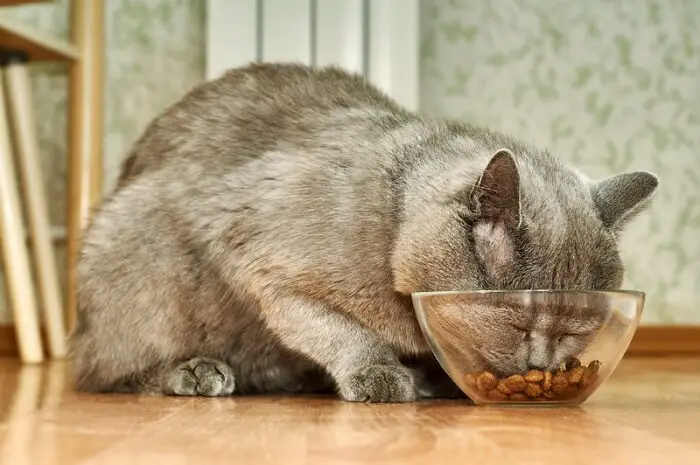
If you can, take your cat to the vet for a health assessment and dietary recommendations.
But for the sake of this guide, you can make the assessment yourself.
- Feel the Body: Can you feel the ribs and spine easily? If they are popping out, feed her more. If she feels like she could try out for the annual sumo championship in Tokyo, decrease accordingly.
- Watch Her: How active is she? Does she leave food out? Does she eat everything in one sitting or like a few small meals throughout the day? These are all clues to her appetite and eating habits.
- Listen to Her: Sure, she might just be a spoiled brat that’s manipulating your weakness for cuteness, but she might actually need more food. If your kitty is abnormally pushy throughout the day or waking you up at night, she could be asking for more.
Dry Food or Wet Food?
The base of your cat’s diet should be protein such as meat and fish. If you decide to go with dry, make sure it’s high in animal-based proteins and low in plant-based proteins (cats can’t digest them). Carbs should make up no more than 10% of the diet.
The best wet cat food should be as close to 100% natural as possible.
How Often Should I Feed My Cat?
Most would say it doesn’t matter when you’re feeding them so long as they’re getting the proper nutritional intake. However, cats prefer to “graze” and eat several small meals throughout the day.
We recommend a varied diet with the proper nutrients. A small can of wet food in the morning supplemented by small amounts of dry food throughout the day is a good start. Stick to a regular schedule and see how it works for a few weeks. If kitty approves and her weight is at a good level, you’re good to go.
Tip: Monthly weigh-ins never hurt (only emotionally). Don’t tell her how much weighs, though.
It’s not always obvious exactly how much you should feed your cat as every cat has differing needs. Stick to our basic guidelines and adjust according to the most important factors. We all love a big fluffy cat pillow, but your cat’s long-term health is more important than the endless social media attention your fat cat will bring!
Also Read: How To Fatten Up A Cat
As an Amazon Associate I may earn a small fee from qualifying purchases at no extra cost to you. This helps us run the site, so thanks for your support!

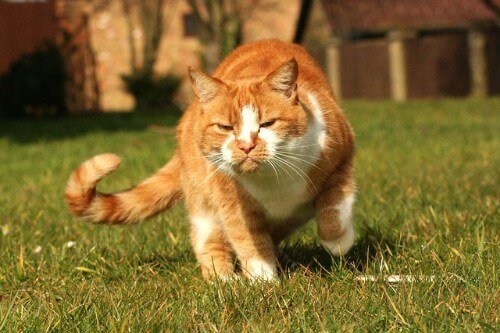
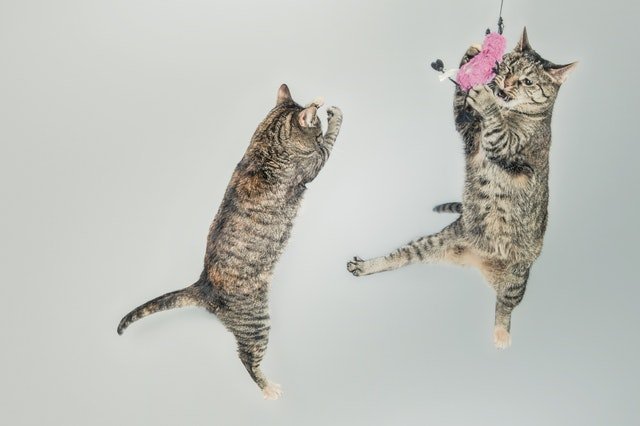
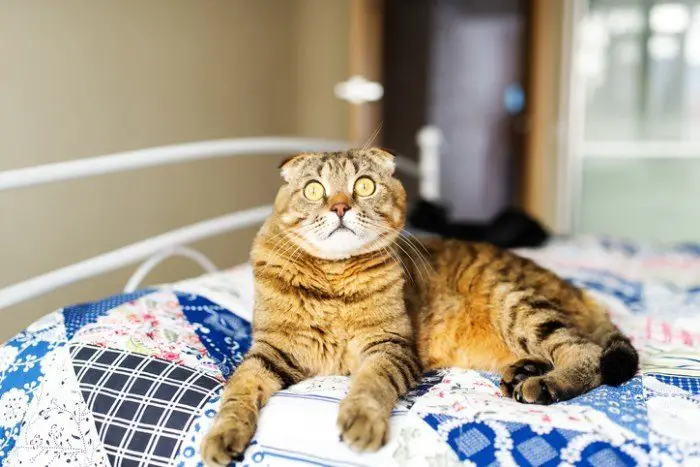
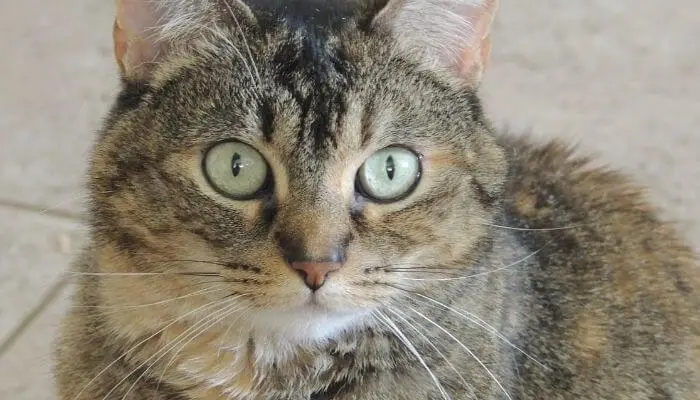
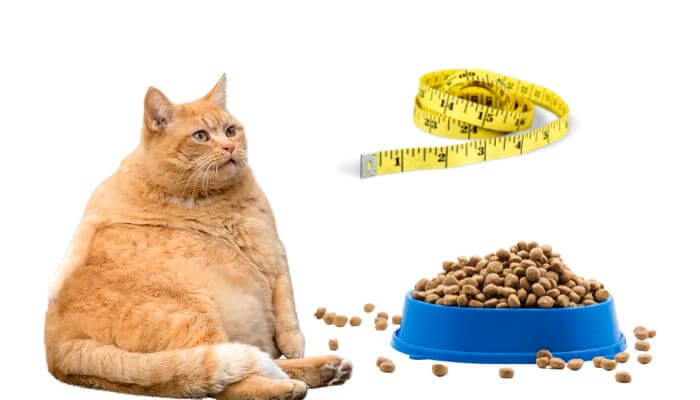
Hiya
I’ve just got a rescue cat called Samantha and she’s quite thing and bony still. She was abused and neglected from a young age and clearly wasn’t fed as much as a cat should be fed. Anyway, my question is, what’s the best cat weight gainer out there to put on some HEALTHY bulk on a cat? We’ve fed Sam some cheese but had to stop and do some Googling as we didn’t know if that was best or not. I welcome your thoughts
Mandy and Samantha (Samandy) x
Hi Mandy,
it is generally easy for a cat to put on weight if you feed them a high carbohydrate diet full of plenty of gains, this is not a good idea as it frequently leads to excessive weight gains and a variety of problems associated with that. Instead I recommend that you feed Samantha a relatively low carbohydrate cat food full of high-quality protein, this will lead to muscle growth and weight gain at a healthy pace. I would recommend you try ZiwiPeak https://www.tuxedo-cat.co.uk/best-cat-food/#ziwipeak
Hope that helps, and we wish you all the best with Samantha.